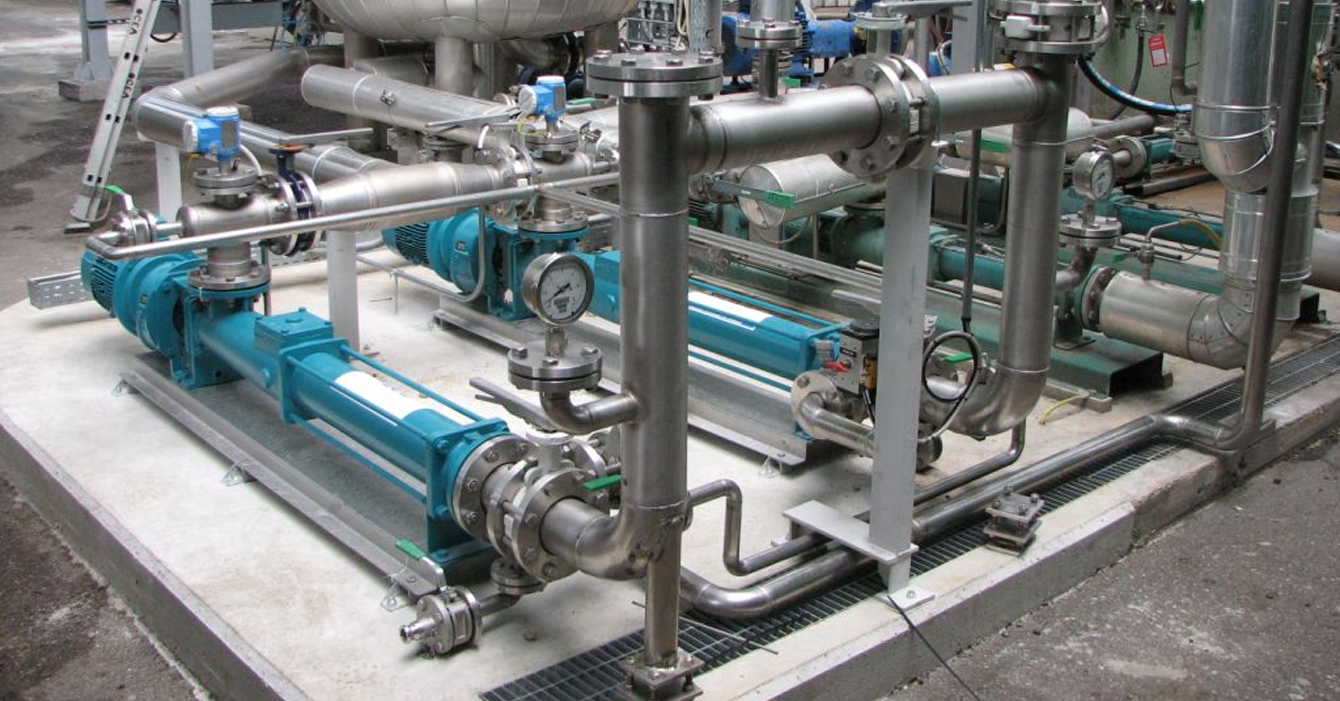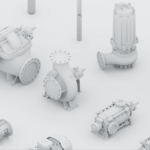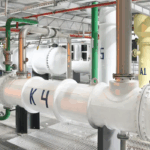Screw pumps are a volumetric type of pump. Their operation is based on a rotating screw (rotor) moving inside a stator with a special profile. The fluid is captured by the screw and moves through the sealed chambers formed between the rotor and stator without pulsations and damage to the structure.
Typical applications
- Food industry: They are used for pumping viscous products such as syrups, creams, yoghurts, pastes, as well as sensitive products such as fruit purees or liquid dough.
- Chemical industry: Ideal for use with aggressive liquids, acids, alkalis and mixtures containing solid particles.
- Pharmaceutical industry: Ensure sterility and precision when working with mechanically sensitive substances.
- Oil and gas industry: They are used for pumping viscous and abrasive media such as fuel oil, bitumen, and oil sludge.
- Wastewater treatment: Suitable for transporting thick sludge, sludge and slurries with a high solids content.
Features of screw pumps
- Pulsation-free flow: Thanks to their operating principle, the pumps ensure a uniform flow of liquid without pulsations, which is especially important for precise dosing or transportation of delicate products.
- High viscosity: They can efficiently pump liquids with viscosities of up to 1,000,000 mPa-s, such as honey, resins or oils.
- Abrasion resistance: Thanks to the rotor and stator materials (e.g. stainless steel, rubber or polyurethane), the pumps are resistant to abrasive wear when handling liquids containing solid particles.
- Self-priming: They are able to operate without preliminary filling with liquid, which simplifies the startup of equipment.
- “Heating shirt": Models designed for use with highly viscous or temperature-sensitive media have the option of heating the working area to maintain optimal fluid properties.
- Reverse flow: Screw pumps can change the direction of fluid flow, which is important for reverse-cycle processes.
How to choose a screw pump
- Product characteristics: Determine the viscosity, chemical composition, presence of solids, and temperature of the working medium.
- Productivity: Calculate the required pumping volume per unit of time.
- Material of execution: Choose a pump made of materials that are resistant to your working environment (stainless steel, rubber, polyurethane).
- Heating systems: Make sure to have a “heating jacket” if the fluid is sensitive to temperature changes.
- Operating environment: Consider specific conditions, such as explosion hazards, hygiene standards, or working with aggressive environments.




